Technology
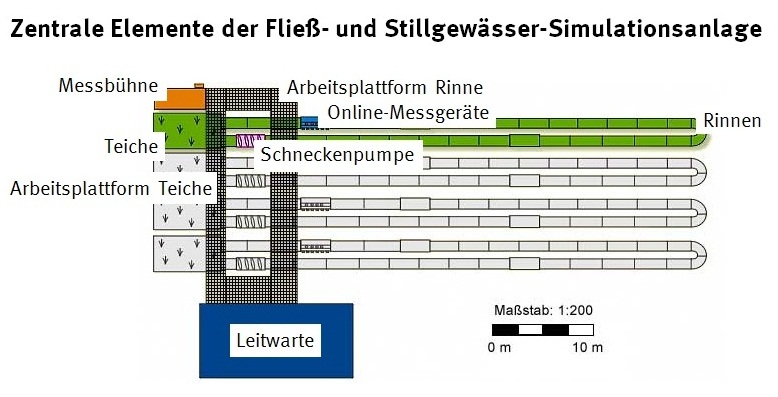
Key elements of artificial stream and pond system
Source: Vera Gutofski


Key elements of artificial stream and pond system
Source: Vera Gutofski
The basic components of the artificial stream and pond system:
For maintenance work (e.g. on online measuring equipment), for manual operation of the screw pumps and for operating the rough and fine dosing systems. The rough dosing systems are used to add large amounts of water, which can be pre-mixed according to experimental demands. The fine dosing systems allow small amounts of substances to be added in various ways (e.g. continuously over a longer period of time). The measuring equipment installed on the work platform and designed for determining the total nitrogen concentration (TNb) and the concentration of total organic carbon (TOC) can be used for single as well as for continuous (online) measurements.
For maintenance work, sampling, and operating the measuring platform
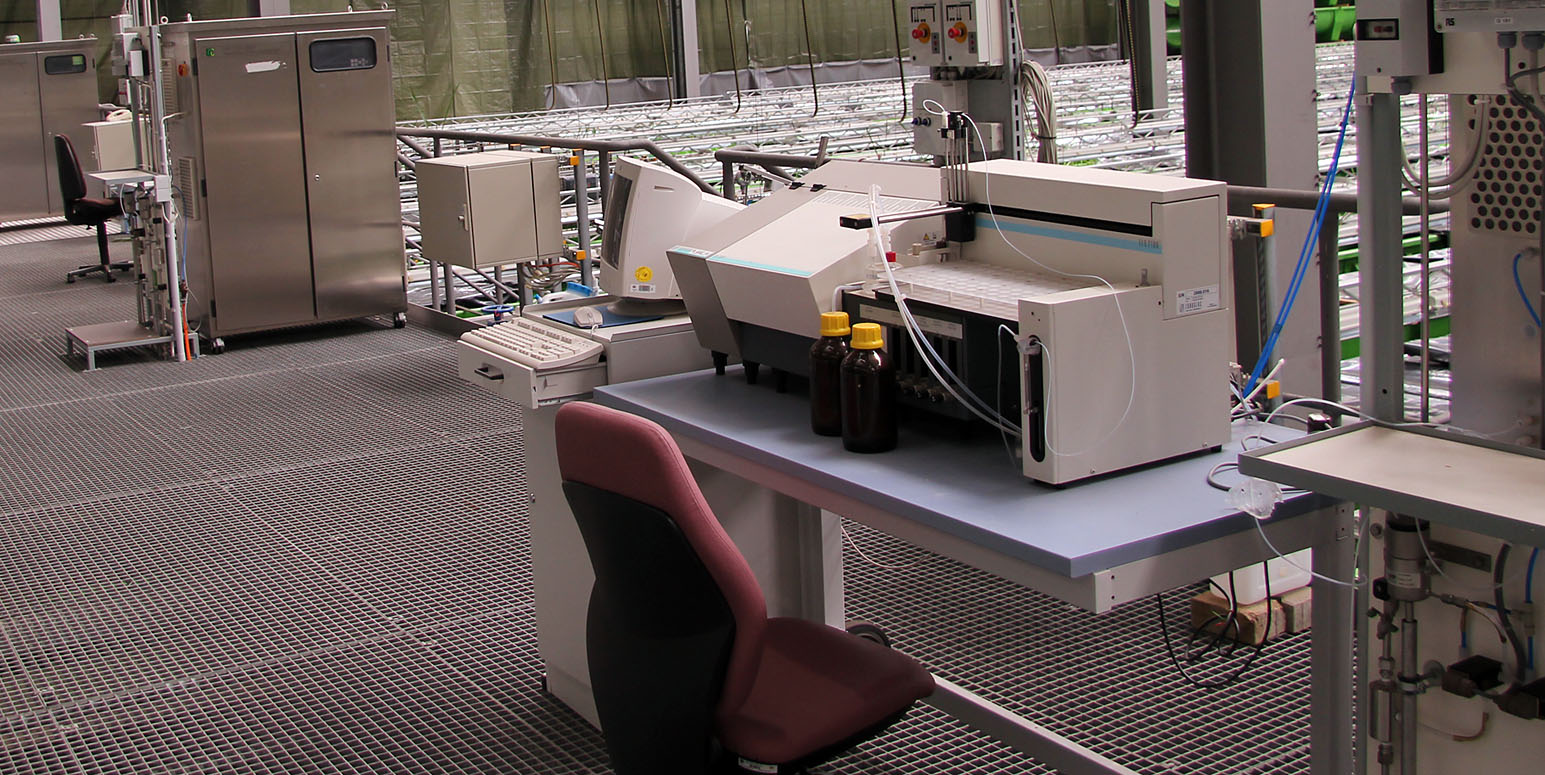
Working platform of TNb-, TOC units and fine dosing system
Source: UBA
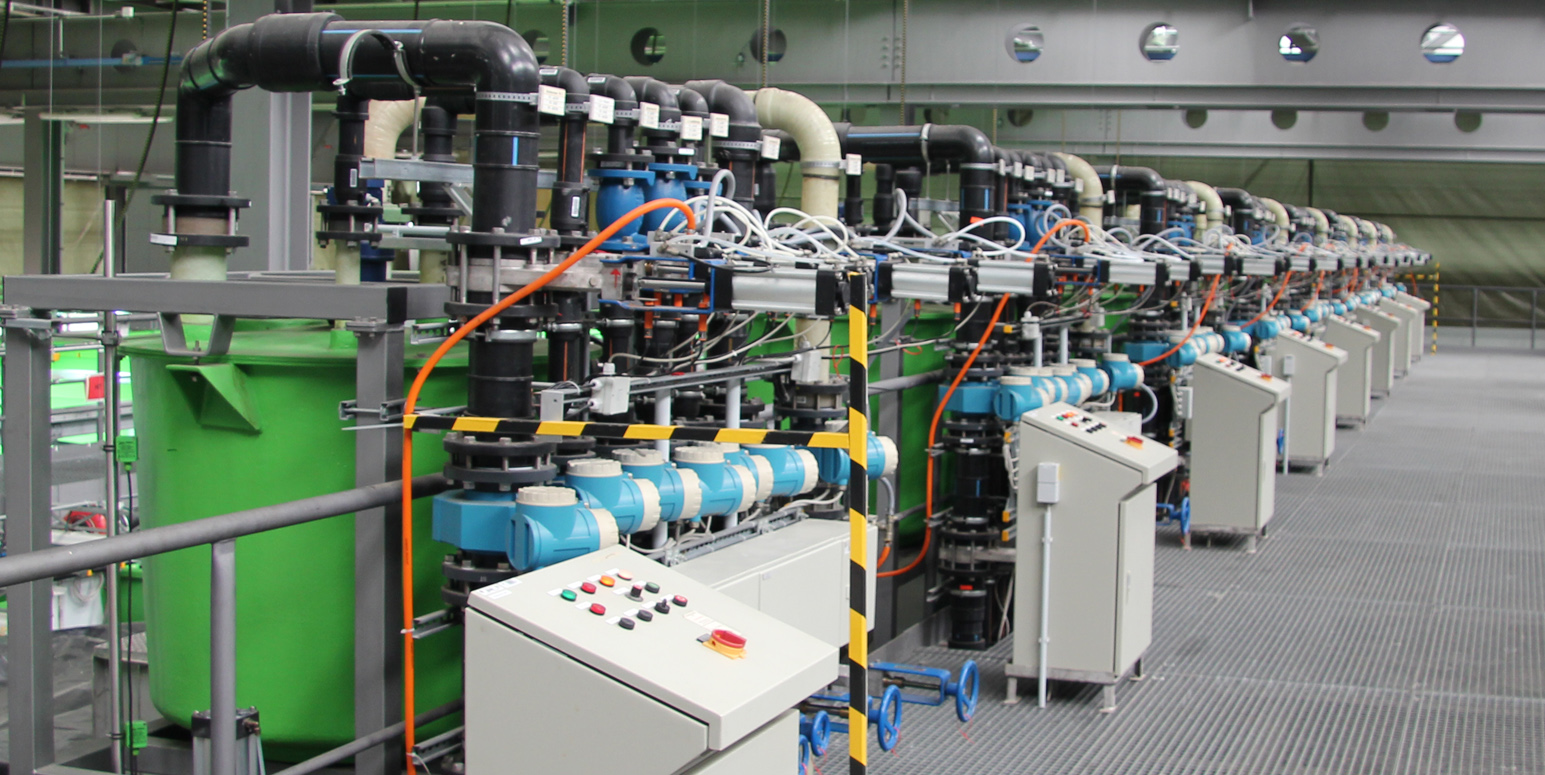
Catwalk with coarse metering system (green tank)
Source: UBA
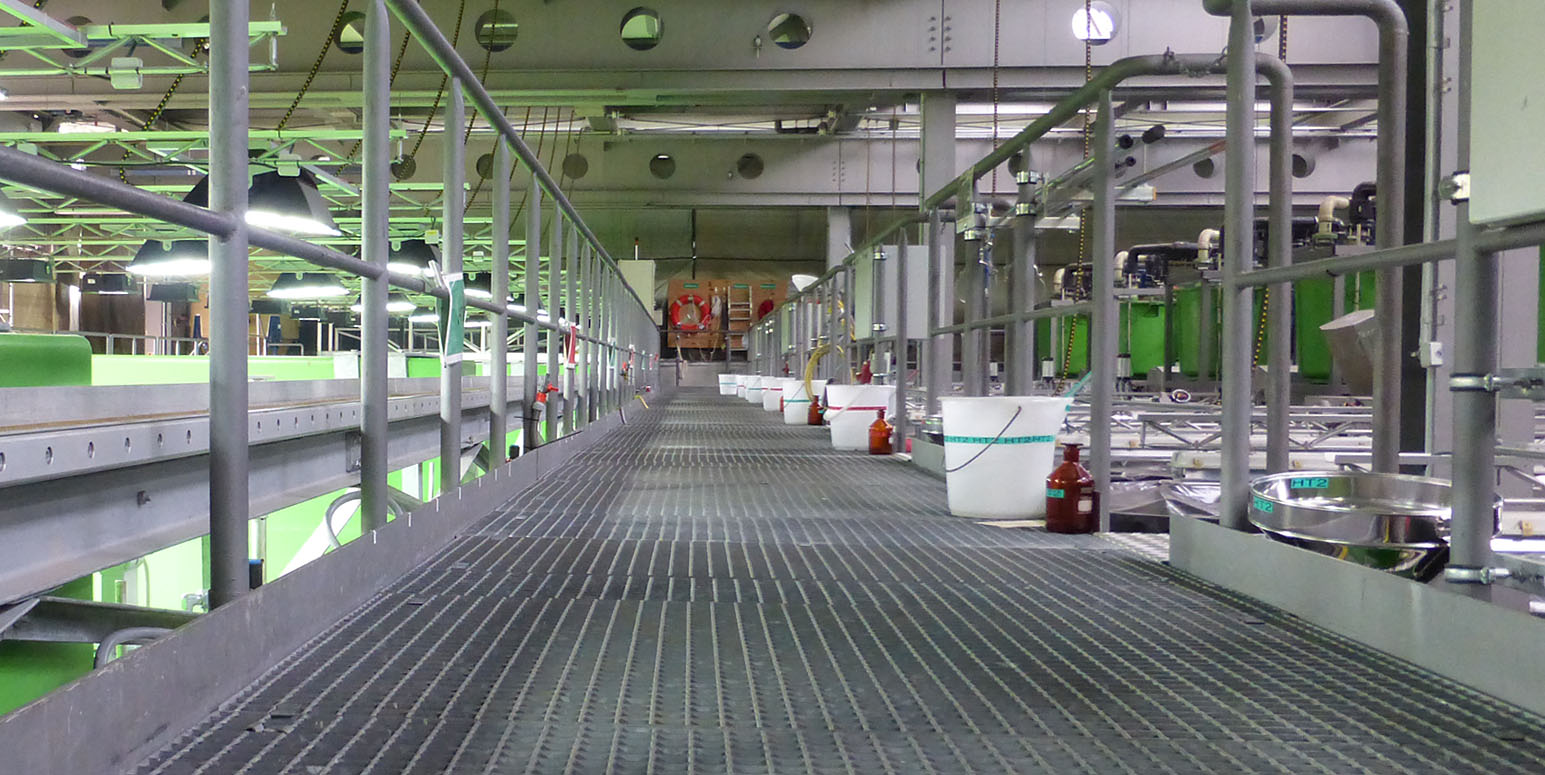
Working platform over the ponds
Source: UBA
The control room is equipped with computers for complete system control and for capturing the measured data.
The mobile measuring platform is equipped with a computer-controlled profiler system which allows highly accurate and reproducible profile measurements in the water and the sediments of the ponds.
Equipment:
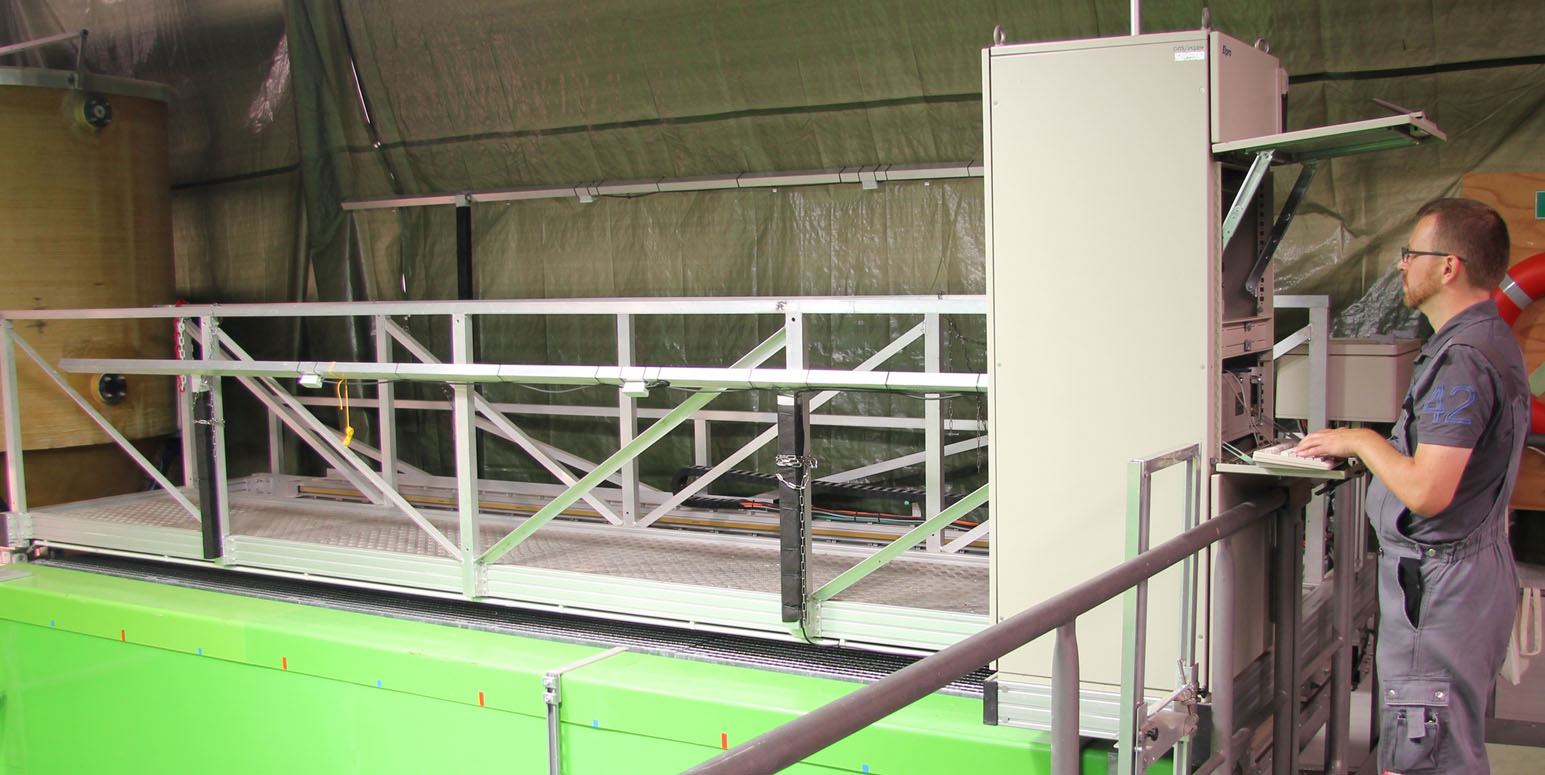
Measuring stage with computer control
Source: UBA
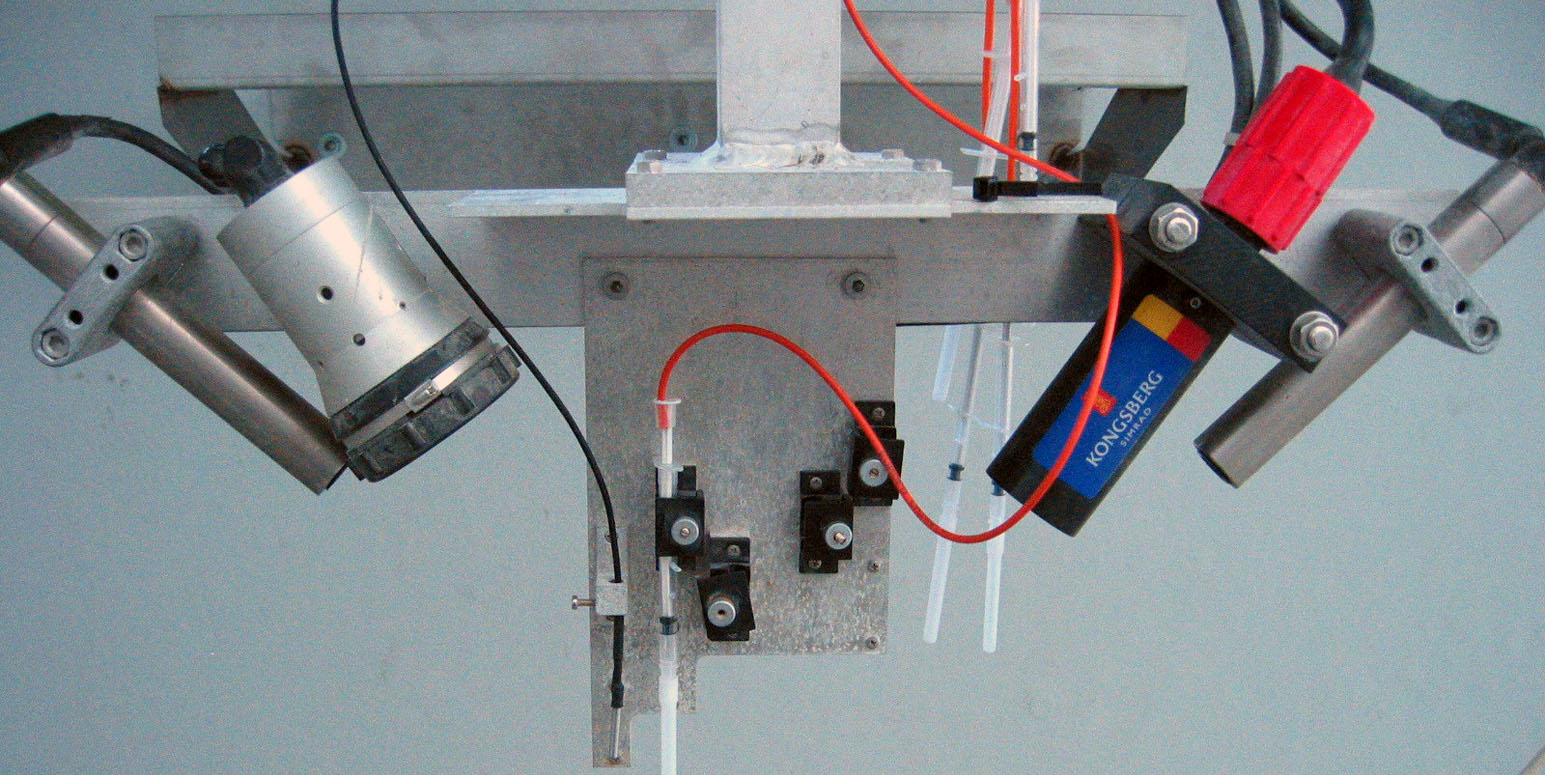
Measuring arm with installed microprobes
Source: UBA
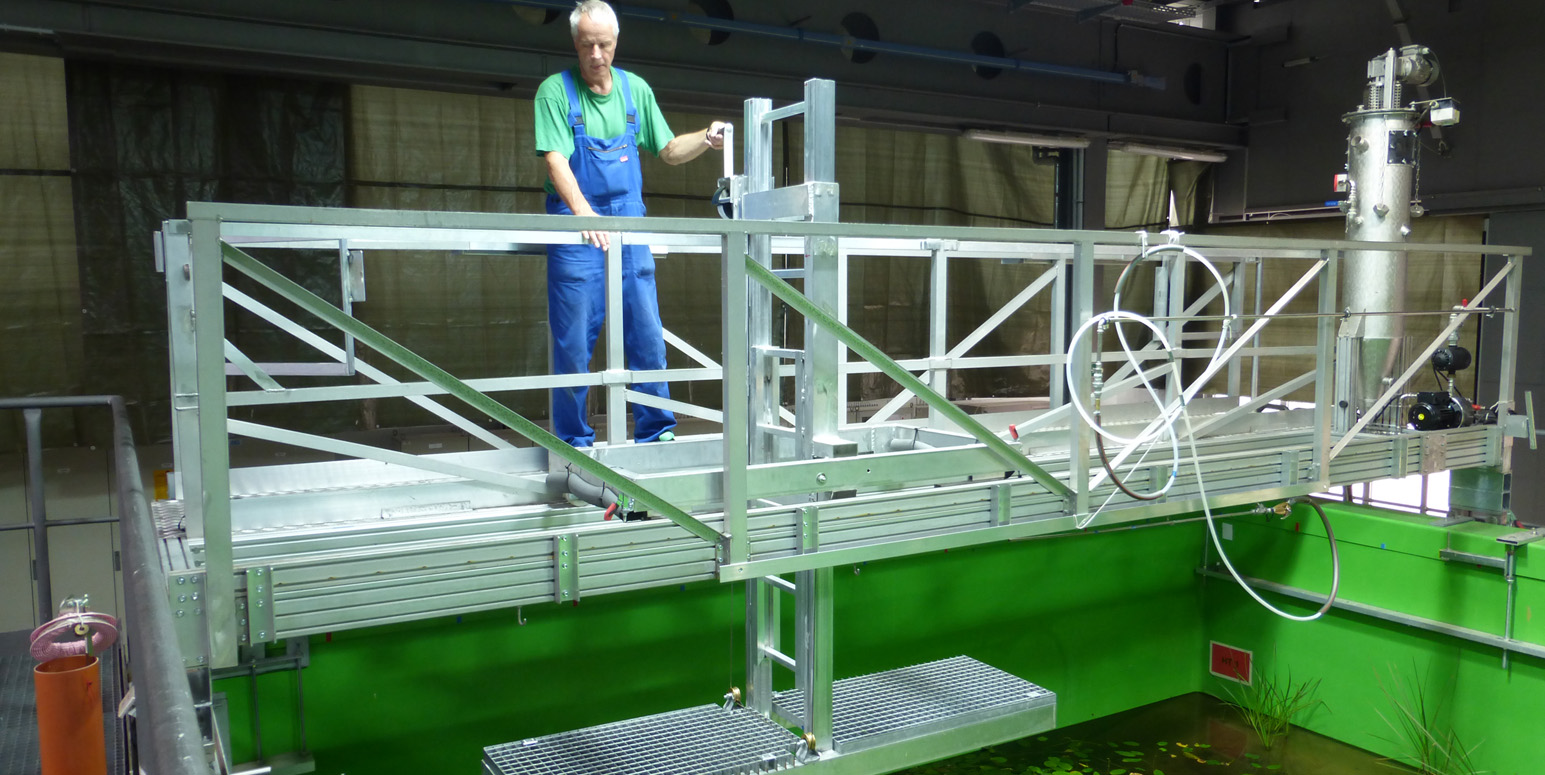
Work platform
Source: UBA
Each stream is equipped with online measuring equipment. The following parameters can be measured continuously:
In the ponds the online measurements include oxygen, conductivity, pH, water temperature, and water level. The online data are transferred to the control room continuously.
In addition the following parameters are measured according to demands:
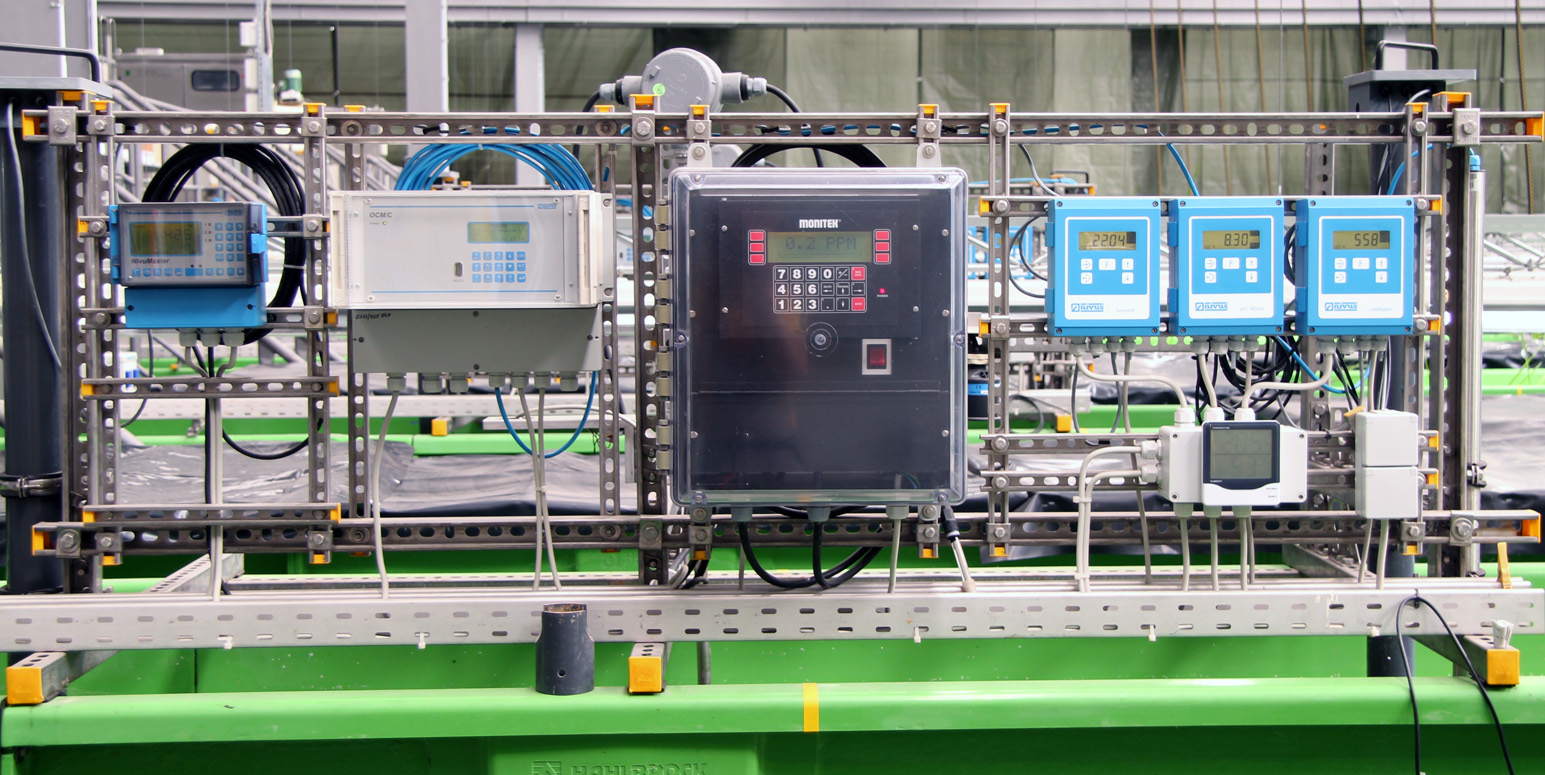
Online measurement of the gutters
Source: UBA

Online measurement of the ponds
Source: UBA
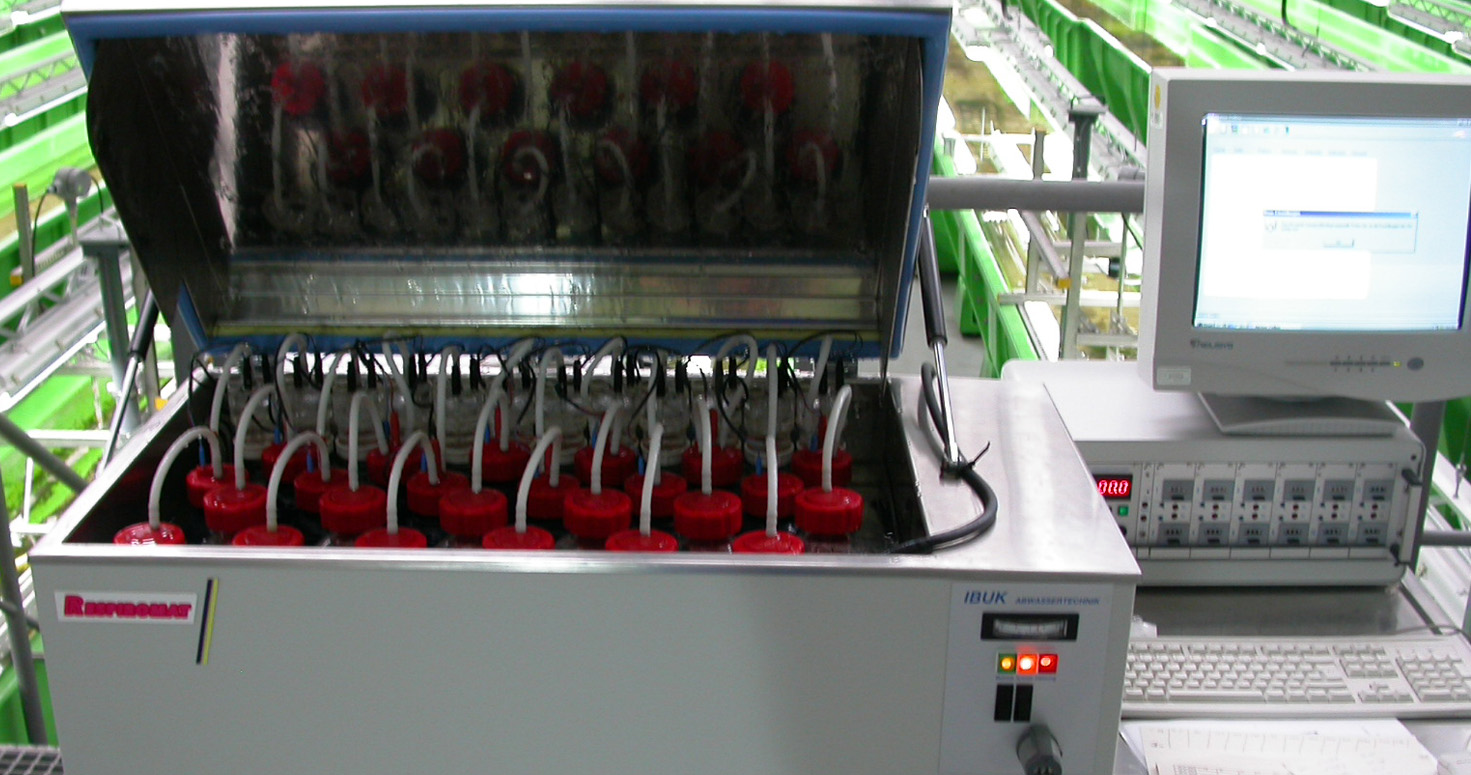
Sapromat for the determination of the BOD or the biodegradation of chemicals
Source: UBA
Up to 8 indoor and 8 outdoor stream mesocosms can be constructed by combining riffle segments and pools within a “modular” system. Each stream can be varied in length. For example, 16 independent streams (8 indoor and 8 outdoor), each up to 106 m in length or 2 streams of approx. 800 m length can be set up. The volume capacity is approx. 36,000 litres per a 106 m long stream. For further details, please refer to the technical data sheet.
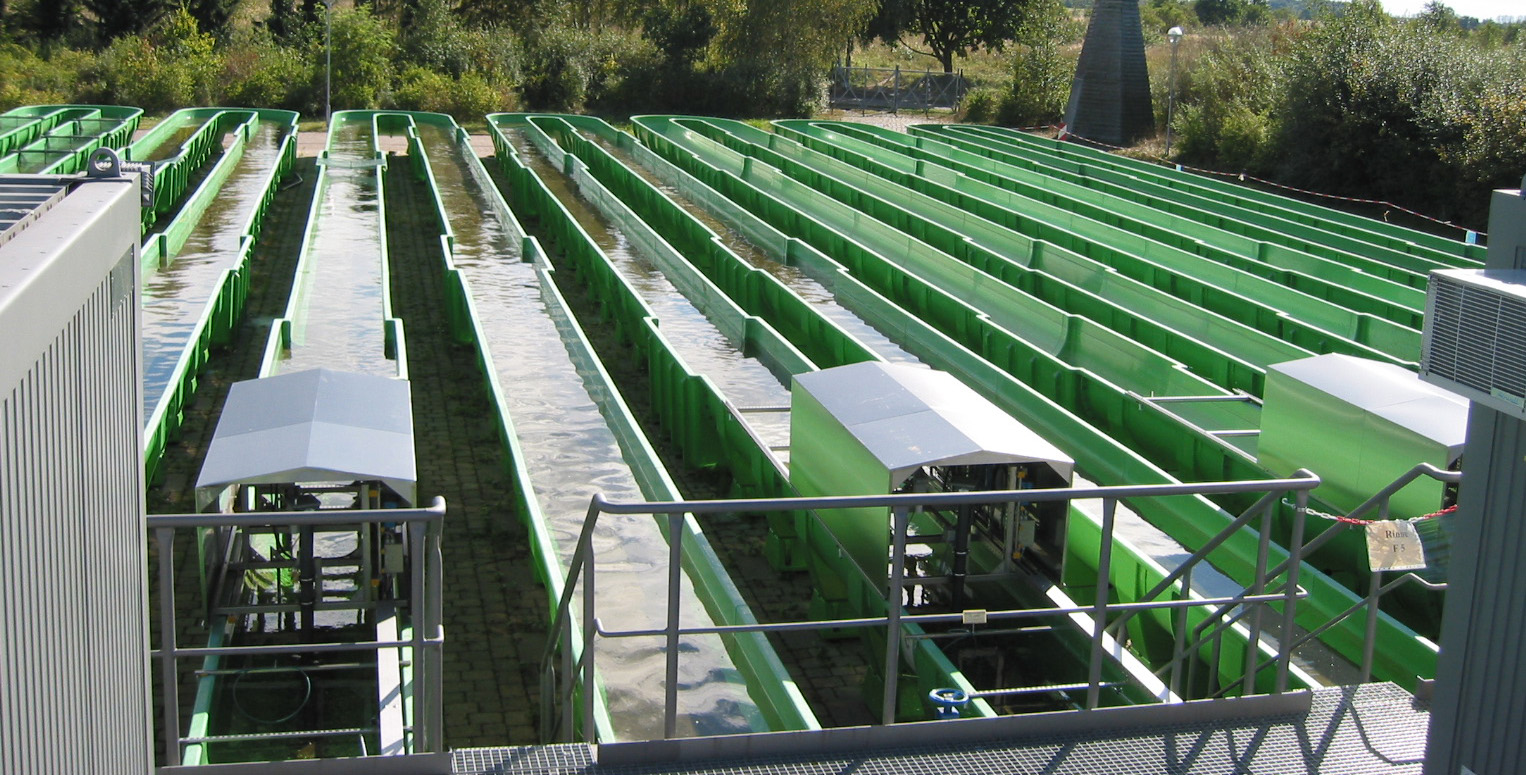
Channels of the outdoor unit
Source: UBA

Channels of the Hall system
Source: UBA
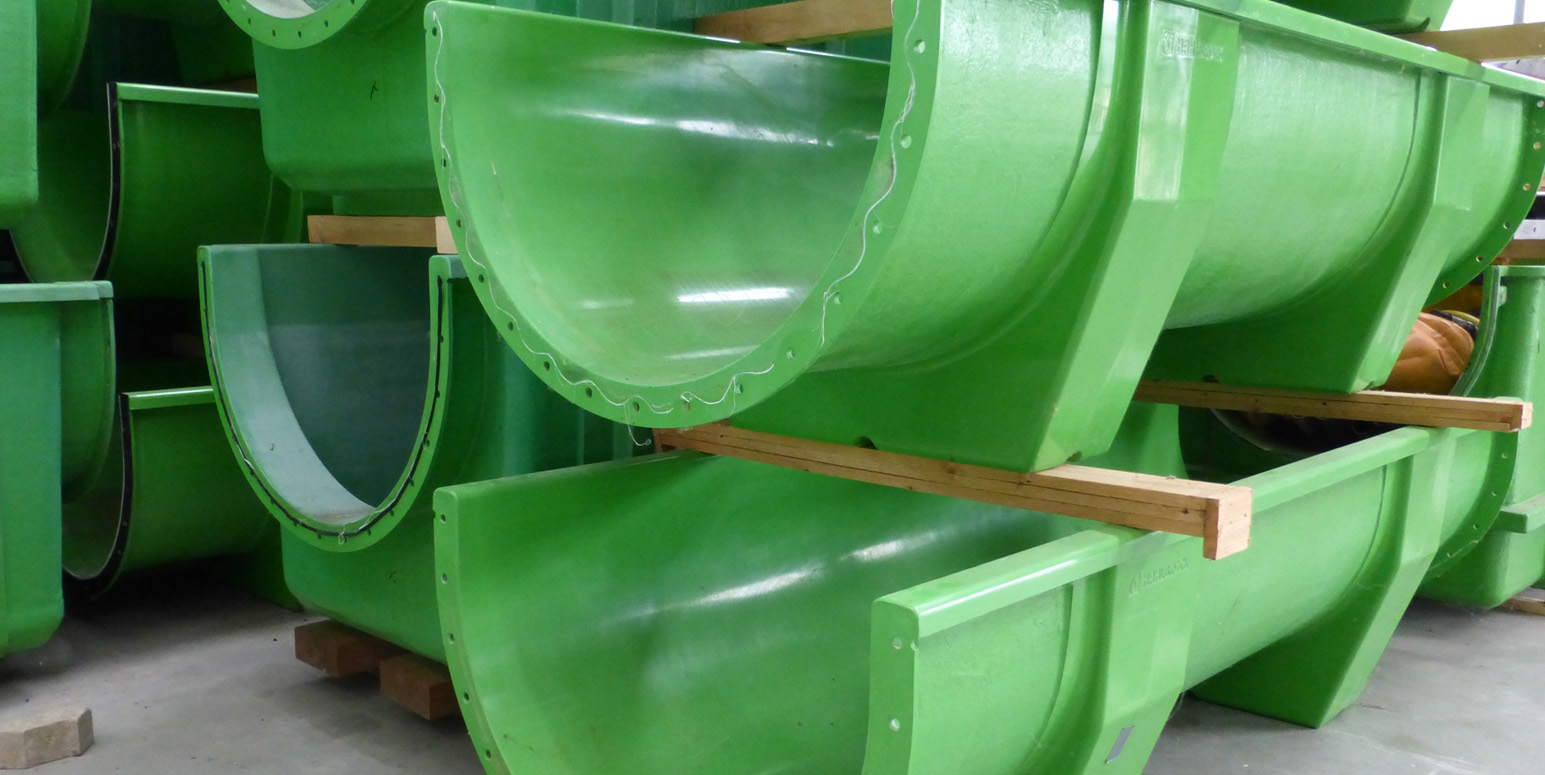
Gutters segments
Source: UBA
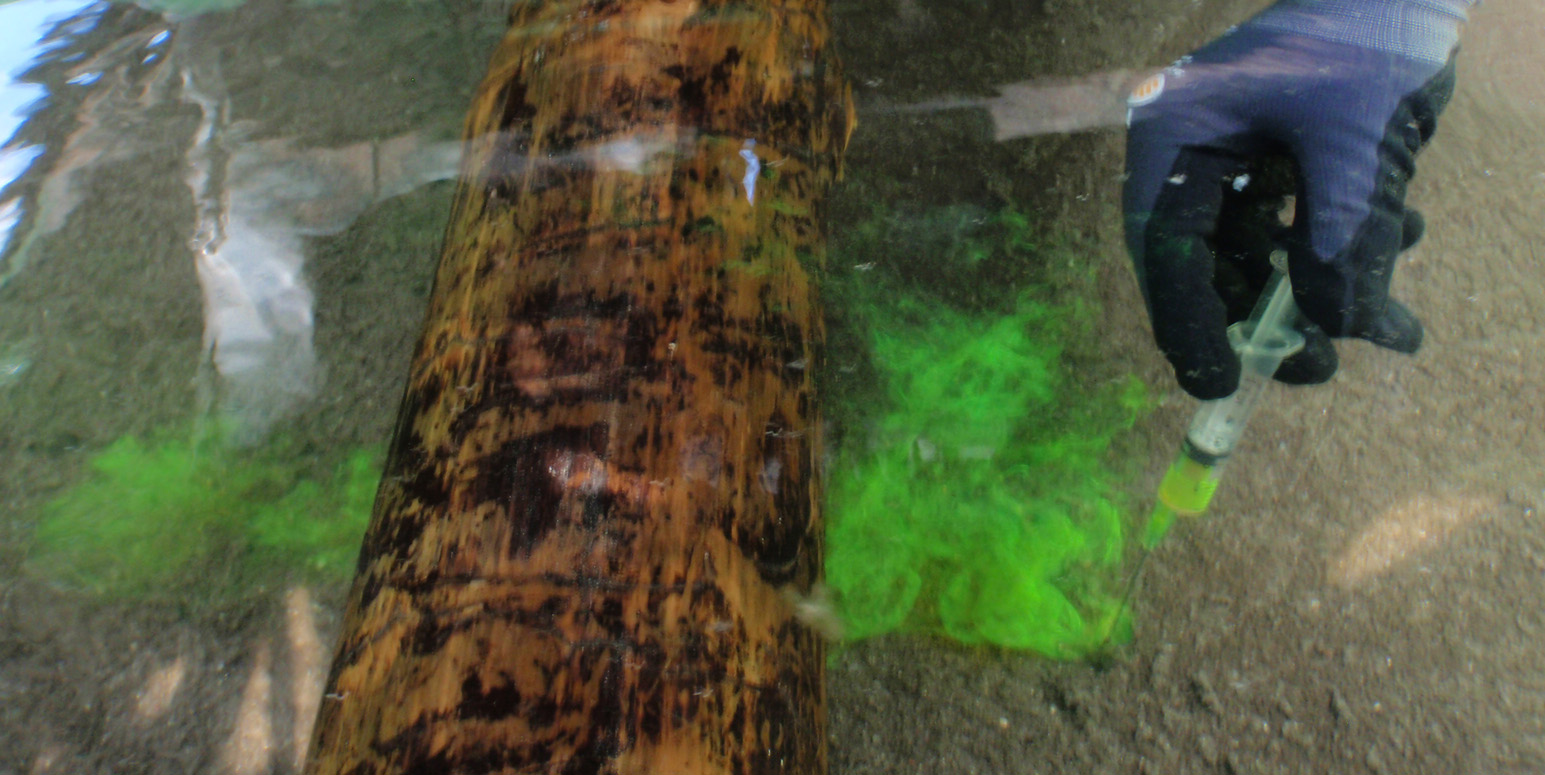
Flow test in the gutters with sodium florescein tracer as tracer
Source: UBA

Supervision on a microcosm of the gutters
Source: UBA
For transporting the water in the through-flow or circulation systems, each stream system is equipped with a specially-designed screw pump which does not harm aquatic organisms, including fish. The maximum flow velocity is 0.6 m/s (fast-flowing lowland river). For further details, please refer to the technical data sheet.
Maximum delivery rate: ca. 290 l/s
Adjustable flow velocity: 0,05 - 0,6 m/s
Ponds can be combined with streams to simulate “flow-through ponds”, or can be used independently for the simulation of stagnant water bodies. A passage running beneath the pond allows drainage control and sampling of bank filtrates. The maximum overall capacity of each pond is around 55,000 litres.
The water body can be mixed by fans in order to simulate wind induced circulation.
For further details, please refer to the “Technology” data sheet.
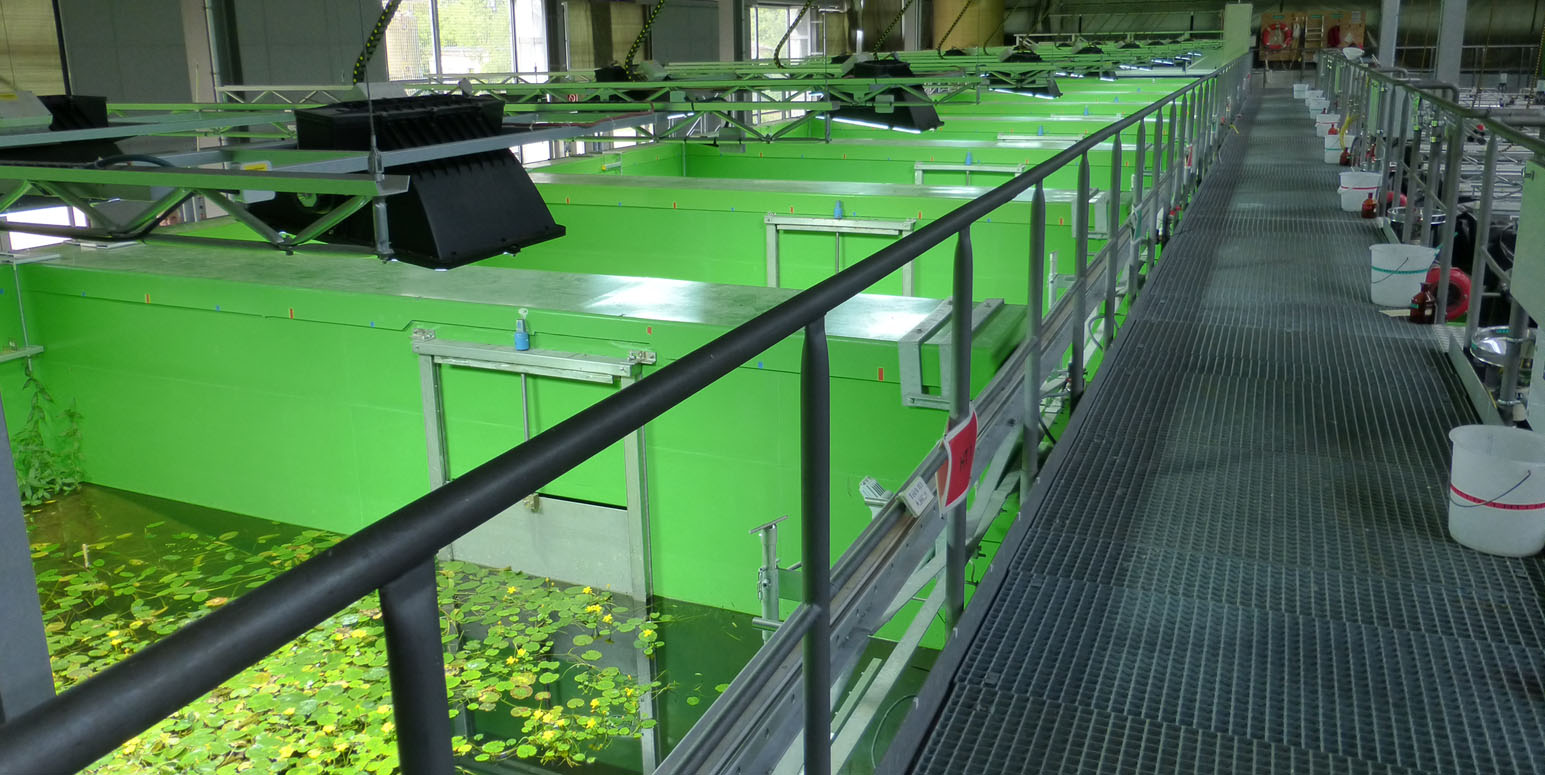
Indoor ponds
Source: UBA
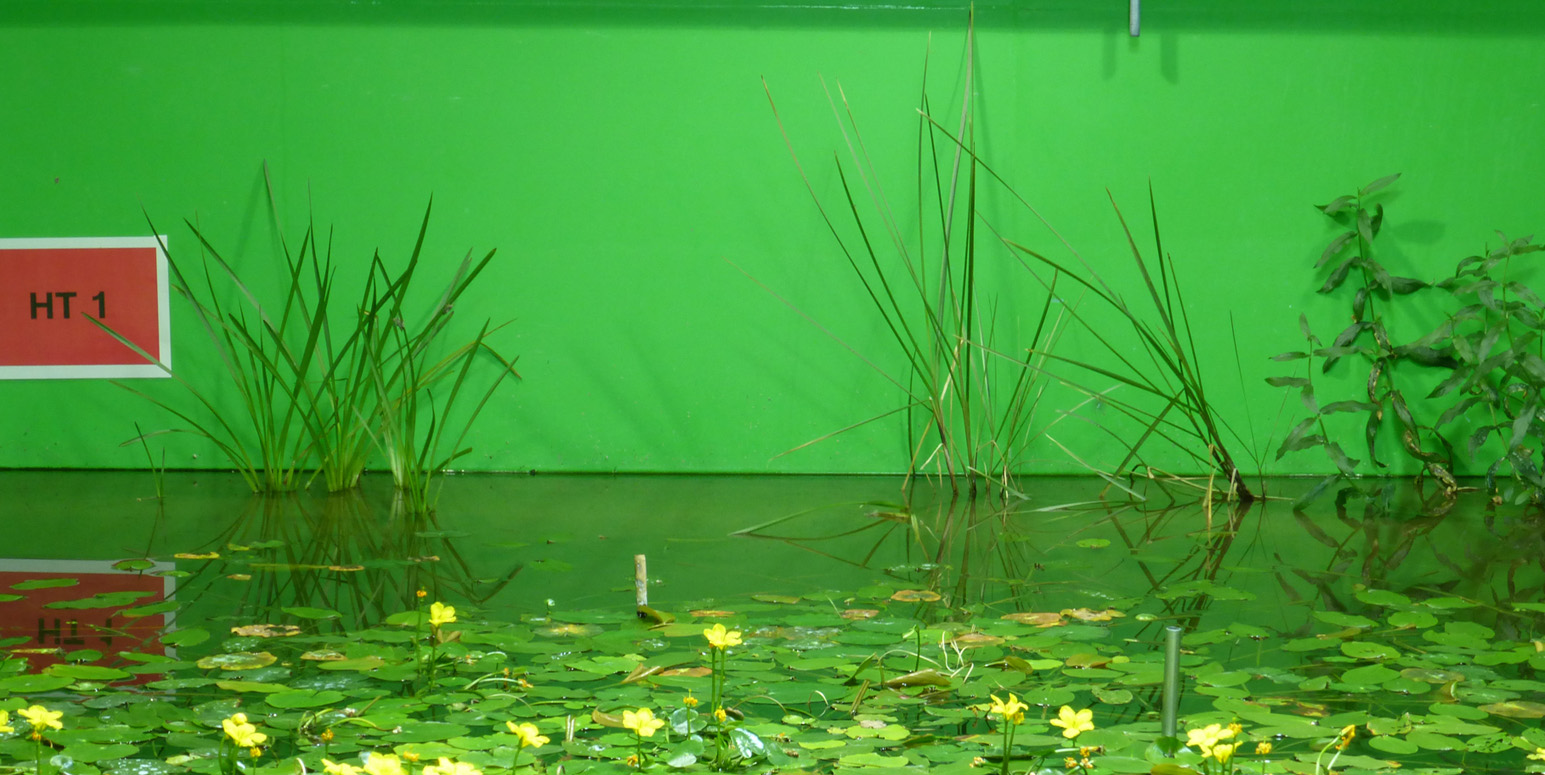
Pond impressions with vegetation along their banks
Source: UBA
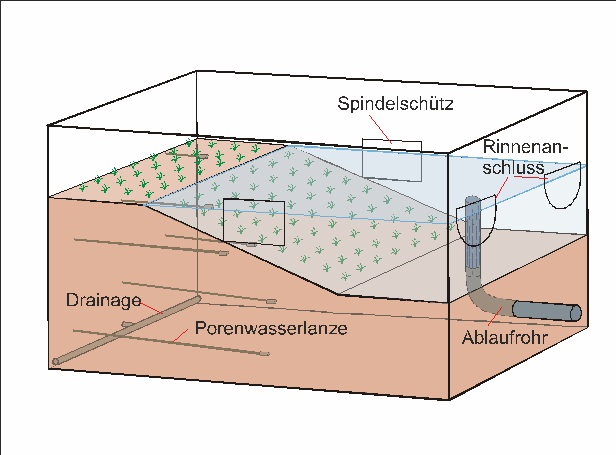
Schema of a pond of the FSA
Source: UBA
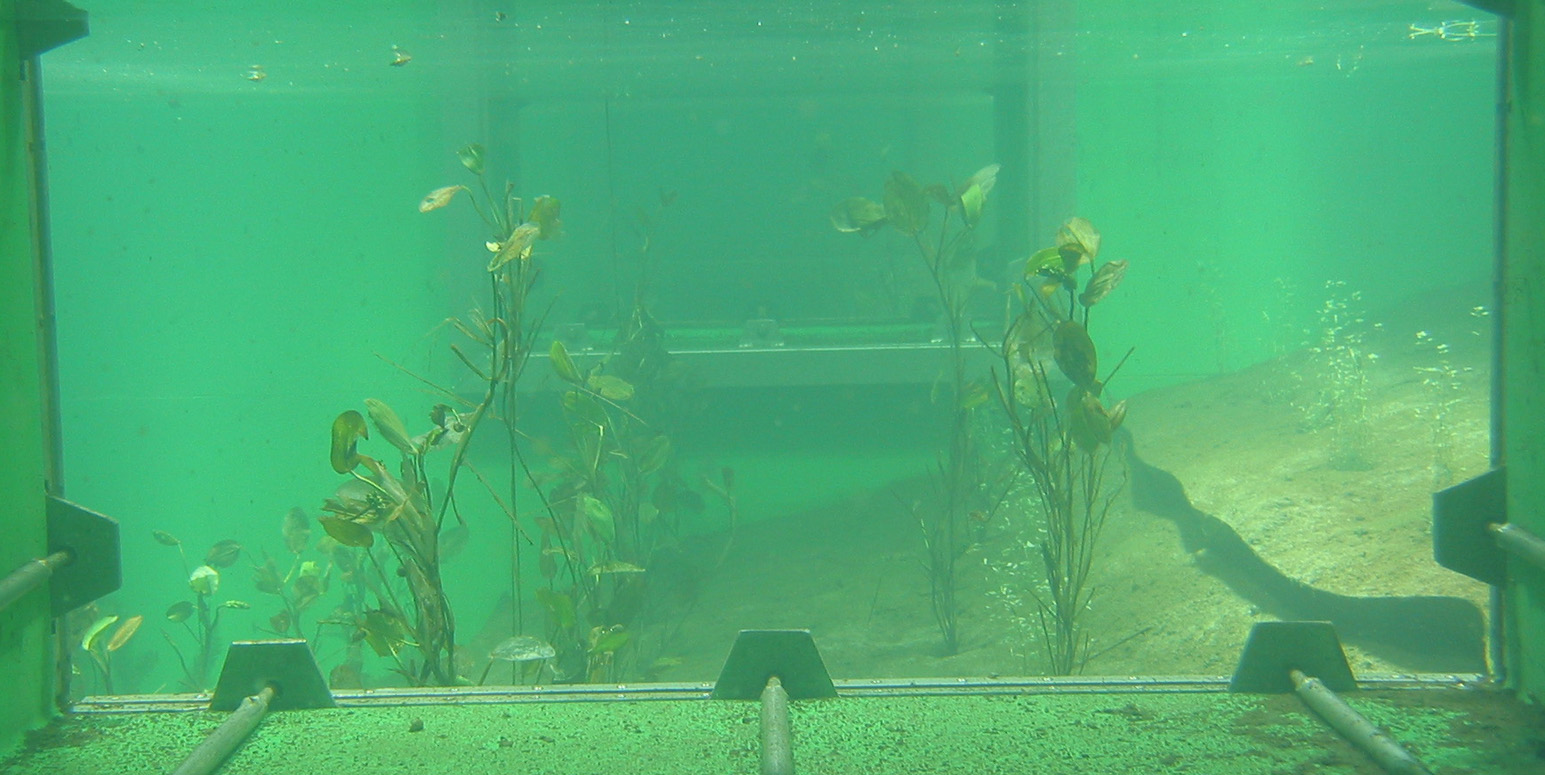
Photographed underwater through the open connection bulkheads
Source: UBA
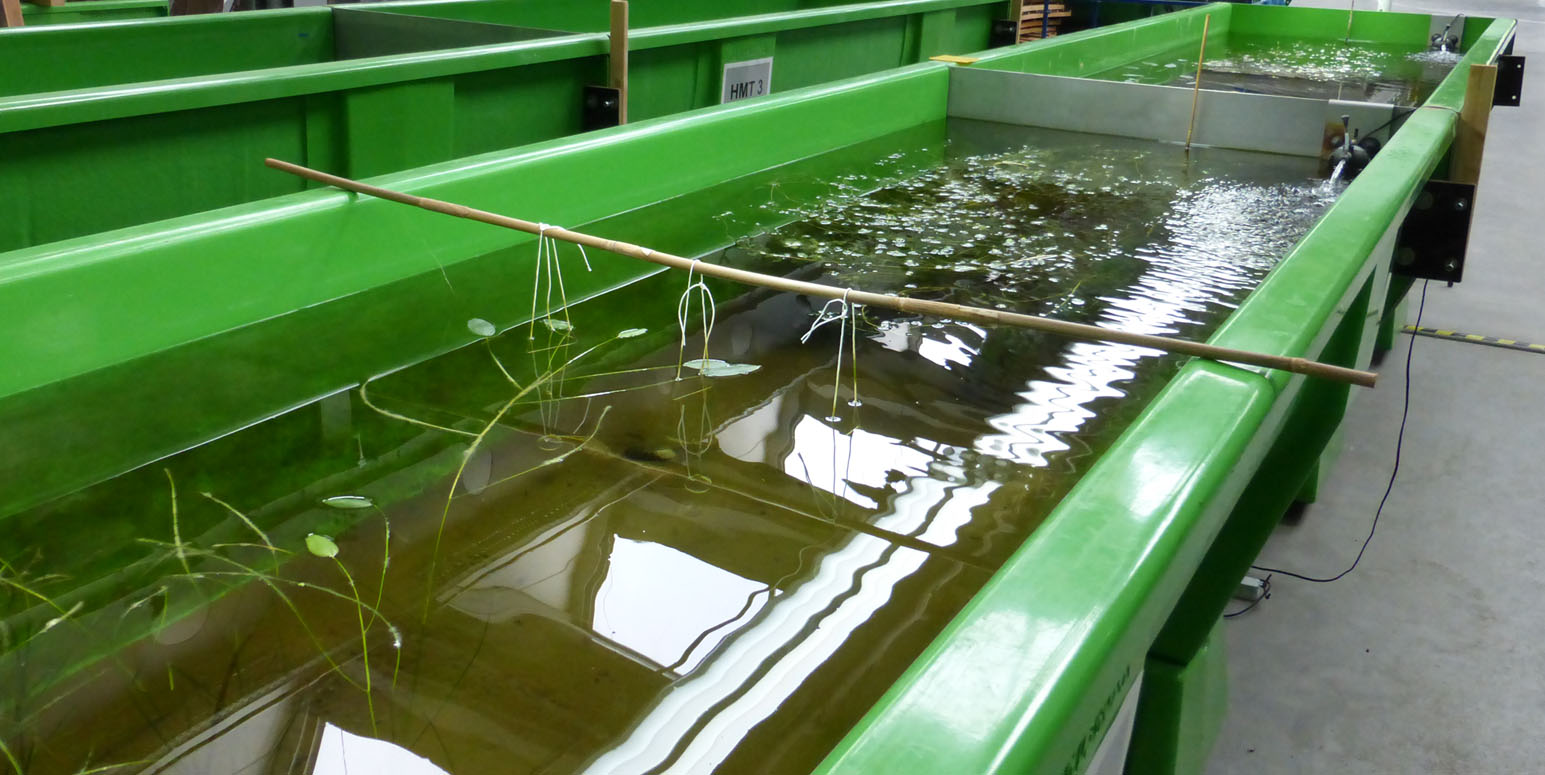
Pond microcosm of a channel segment
Source: UBA
All data from experiments run in the FSA are fed into the central database (FSA-DB) for further analysis.
The input of data, in particular physico-chemical data, from defined analysis protocols in open document format (ODF) or as MS Exel data sheet (*.xls) is automated.
The ponds and streams of the FSA are equipped with an online measurement system, which also includes the meteorological station at the field station of the UBA. Every 10 s, up to 400 data are measured and temporarily stored in a Round Robin database (RRDB). Depending on the project requirements, parts of the data will be stored half automatically or aggregated data (e.g. mean per hour) will be transferred automatically into the FSA-DB. For each measurement device, limit values can be set separately e.g. for an email notification system in case of system failure (alarm system).
The database user program is designed in modular, multilayered architecture based on J2EE Java program. It can be used independently from the system software and is also available via the internet. The components designed for the FSA-DB have preferably been developed using open source software.
For data recall and evaluation, the UBA provides a complex, data-sensitive evaluation and report device.
For external users - see menu item external use of the test plant - and for the general public it is possible to get access to released project data via internet. The browser application allows for context-sensitive search in the FSA-DB.
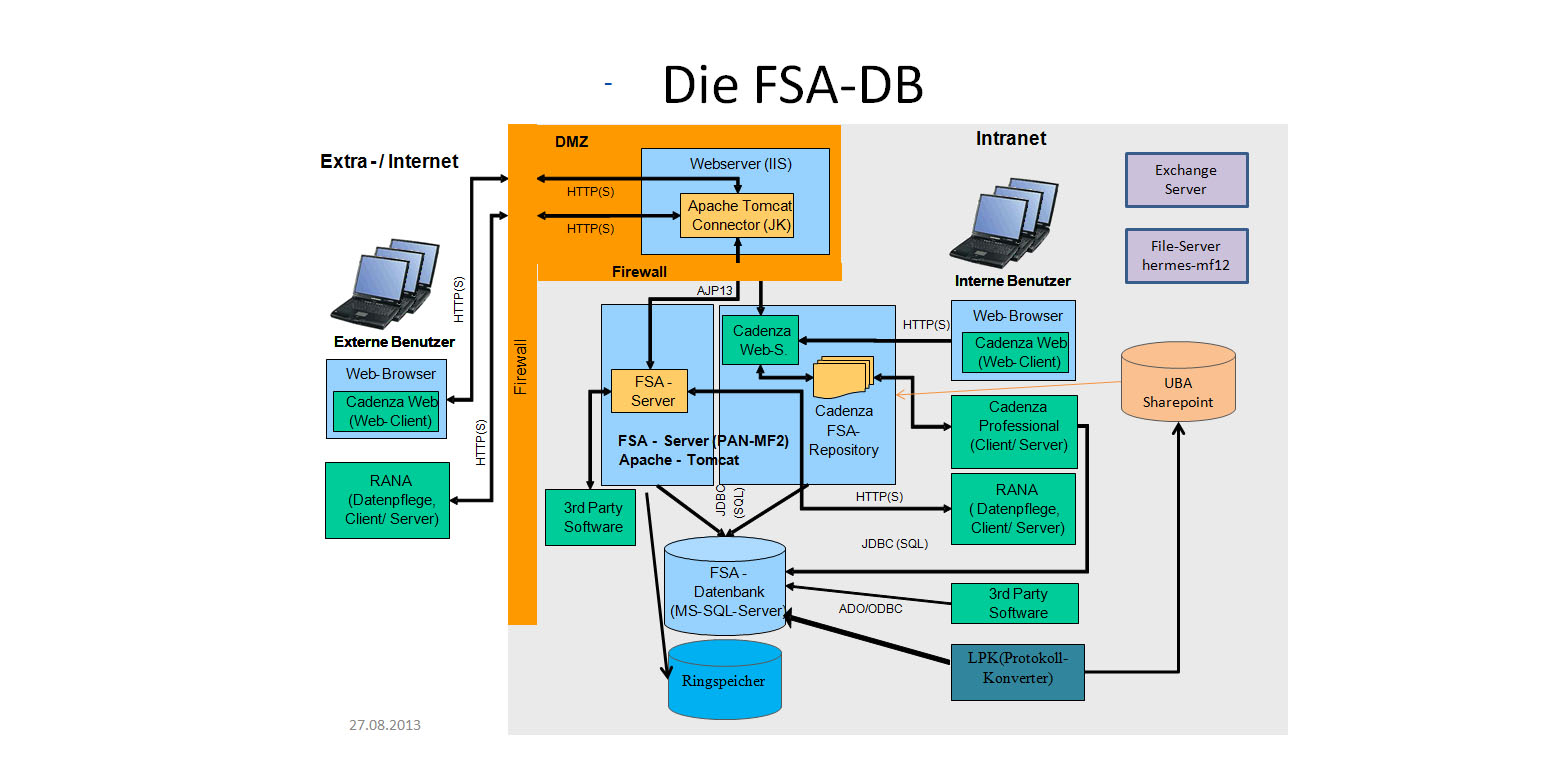
software architecture of FSA-DB
Source: UBA
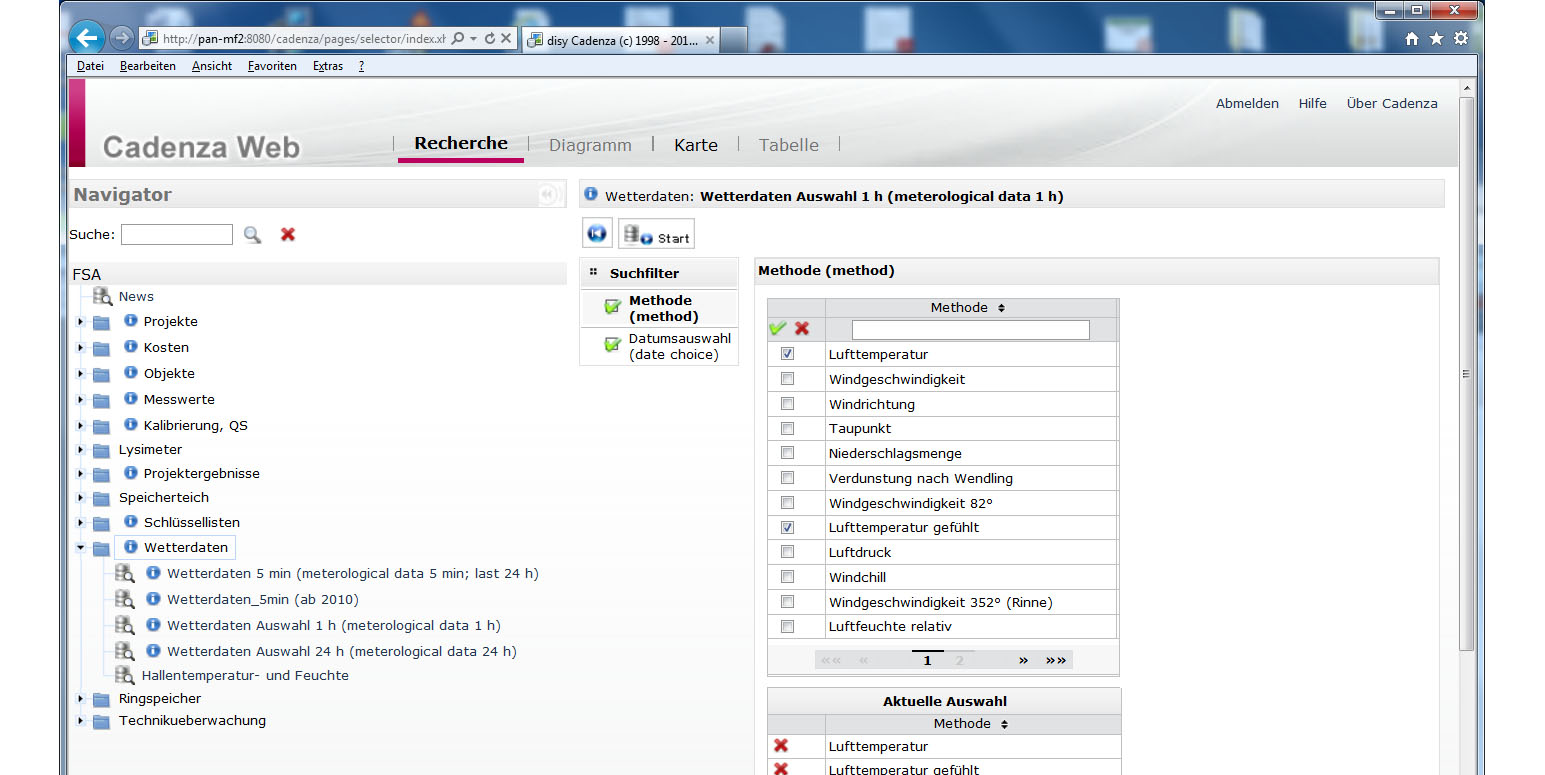
Data selection in the search tool
Source: UBA

Graphical result processing
Source: UBA